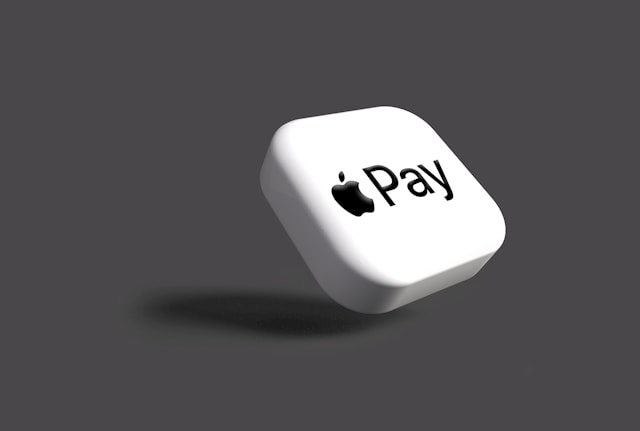Here’s a question: when’s the last time an online casino didn’t feel like the same old rinse-and-repeat? If you’re like most Irish players, you’ve probably jumped around a dozen sites, clicked through confusing bonus offers, sat through laggy spins, and maybe even waited ages for your own money to show up. Let’s cut through that noise.
Slot7 Casino has quietly become one of the most talked-about platforms among Irish punters—and it’s not hard to see why. Smooth gameplay? Check. Actual decent bonuses? Yep. A library of games stacked with heavy-hitters? 100%. But what makes it a standout isn’t just the glitzy front—it’s how well it actually works for Irish players. It’s not some sketchy offshore joint or a bloated UK-facing monster. It’s sharp, fun, and shockingly player-friendly.
So let’s break it all down. No fluff. Just the facts, the banter, and the inside scoop.
First Things First: What’s Slot7 Casino All About?
Slot7 Casino is, at its core, built for folks who want to game without the faff. You land on the homepage and it’s clean—no pop-ups begging for your email, no hard sell. Just a tidy layout showing you what’s on offer: slots, tables, live casino, and some very tasty bonuses.
It’s licensed, legit, and runs like butter whether you’re playing on a laptop or tapping through spins on your phone. Which, let’s be honest, is probably where most of us do our damage—on the couch, waiting for the bus, hiding from responsibilities.
And here’s the kicker: it’s got proper support for Irish players. Euro deposits, Irish-friendly payment options, and no need to jump through hoops to withdraw your winnings. That might sound basic, but you’d be surprised how many sites make a total mess of that.
Let’s Talk Games – Because That’s Why You’re Here
A casino can look as slick as it wants, but if the game lineup is weak? You’re gone. Thankfully, Slot7 doesn’t mess about.
They’ve got:
- Classic Slots – Think 3-reel, fruity-style machines that bring the pub slot nostalgia.
- Video Slots – Wild graphics, crazy themes, bonus rounds that pop off. This is where the action lives.
- Megaways – For the chaos lovers. 100,000+ ways to win? Go on.
- Progressive Jackpots – Chase the big boys. Mega Moolah is here. So is Major Millions.
- Table Games – Blackjack, roulette, poker, baccarat. Whether you’re a strategist or a seat-of-the-pants kind of player, there’s a table with your name on it.
- Live Dealer Games – Streamed in HD, with actual human croupiers. It’s like walking into a real casino, minus the taxi fare.
Oh, and it’s not just about quantity. These are premium titles from NetEnt, Microgaming, and Play’n GO. If you know those names, you know we’re talking top-tier games.
A Few Fan Favourites Worth Trying:
One of the best things about Slot7 Casino is how easy it is to find something you’ll actually enjoy spinning. Whether you’re a jackpot chaser, a casual player, or someone who just loves wild visuals and weird themes, there’s a slot with your name on it. And because Slot7 works with the top dogs in game development, the quality’s always spot on.
If you’re not sure where to start, here’s a handful of games that are absolutely flying with Irish players right now:
| Game Title | Vibe | Why It Slaps |
| Book of Dead | Ancient Egypt madness | High volatility, huge paydays |
| Fire Joker | Retro meets modern | Simple, quick-hit wins |
| Reactoonz | Wacky aliens, endless combos | Non-stop action and explosions |
| Lightning Roulette | Live roulette with a zap | Massive multipliers, pure chaos |
| Big Bass Splash | Fishin’ with wild wins | Fun theme, solid free spins |
Of course, this is just scratching the surface. New games are added constantly, and Slot7 does a nice job spotlighting what’s fresh or trending. You can even try most of the slots in demo mode before dropping in real money—which is ideal if you like testing the waters before diving in. Whether you’re chasing features or just vibing out on autoplay, there’s loads to love here.
Bonuses: Not Just Another Gimmick
Let’s get this straight: most casino bonuses are written by lawyers and designed to look generous while being anything but. You get €100 “free” only to find out you need to wager €2,000 before seeing a penny of it. Cheers for that. Slot7? It’s refreshingly different.
Here’s what you can actually expect:
- Welcome Bonus: Decent matched deposit + free spins. And not just on some obscure game you’ve never heard of.
- Reload Bonuses: Existing players get love too—regular offers to top up your balance.
- Cashback: Lose a bit? Get some back. Not a bad way to soften the blow.
- Free Spins Friday & Slot of the Week: These promos hit regularly and keep things interesting.
Wagering requirements? Fair. Not suspiciously low, but also not designed to be impossible. Just manageable enough that if you play smart, you can turn bonus cash into withdrawable funds.
Banking: Straightforward, No Shenanigans
Depositing is smooth, and more importantly—fast. They accept:
- Debit cards (Visa, Mastercard)
- eWallets (Skrill, Neteller)
- Bank transfers
- Paysafecard
You can deposit in euros, and the site shows everything clearly. No hidden fees. No sudden conversion charges. What you see is what you spend.
And withdrawals? Solid. Once you verify your account, which only takes a minute, you’re good to go. eWallets are fastest (sometimes within hours), cards take a bit longer, but nothing excessive. No horror stories, no vanishing funds.
Mobile Performance: Plays Like a Dream
Let’s be honest—who’s really sitting down at a desktop to play slots these days? Mobile is king. Slot7 knows this, and their mobile setup is bang on.
Whether you’re on Android or iPhone, it runs without a hitch. No app needed—just open your browser and go. The layout adjusts perfectly, games load in seconds, and everything works via touch without weird glitches or freezing.
You can deposit, claim bonuses, chat with support, and even play live dealer games—all on your phone. Honestly, you could smash out a full casino session on your lunch break and still have time for a chicken fillet roll.
What Could Be Better?
Alright, no site is perfect. So in the spirit of fairness, here are the downsides:
- No sportsbook. If you’re into betting on footy or the races, this ain’t your place.
- Bonus promos can feel a bit cookie-cutter after a while. A loyalty program with actual flair wouldn’t hurt.
- No Irish-themed slots front-and-centre. Missed opportunity there!
Still, these are nitpicks. For a slots-first online casino experience, Slot7 is nailing it.
Final Thoughts – Is Slot7 Casino Worth It?
Honestly? Absolutely. If you’re tired of casinos that overpromise and underdeliver, Slot7 Casino is like a pint that’s actually poured right. It’s not trying to be the flashiest site on the internet—it’s just damn good at what it does: clean gameplay, solid games, decent bonuses, and a hassle-free experience for Irish players.
Whether you’re brand new to online casinos or just fancy trying a new spot, Slot7 is well worth a spin. Just set your limits, trust your gut, and enjoy the buzz. May the reels line up in your favour.












 Bitcoin
Bitcoin  Ethereum
Ethereum  Tether
Tether  XRP
XRP  Solana
Solana  USDC
USDC  Cardano
Cardano  TRON
TRON  Lido Staked Ether
Lido Staked Ether  Avalanche
Avalanche  Toncoin
Toncoin